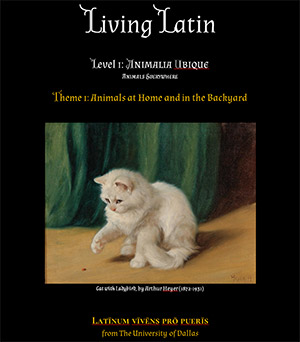One of my main inspirations for UD’s Living Latin curriculum, for which I am currently writing Level 1 (K-4th grade), came from an appendix in a book on St. Ignatius’ Idea of a Jesuit University (1954), by Father George Ganss (1905-2000). In this appendix entitled “Historical Sketch of the Teaching of Latin,” Fr. Ganss shows that up until the 1700s, and especially during the Middle Ages and Renaissance Humanism, Latin was taught as a living language, and this corresponds to different objectives than today: “[M]odern methods of teaching Latin aim chiefly to impart knowledge about the language and its literature. In contrast, the ancient methods in the 13th and in the 16th centuries aimed chiefly to develop an art – the art of speaking, reading and writing the language” (p. 226).

